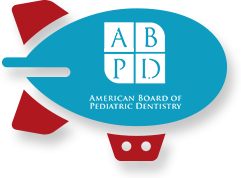First Trip to the Dentist: How to Make Sure it is Smooth Sailing
October 21st, 2019

Trips to the dentist are an essential part of oral care, but for a child, the first time can be scary. Sitting in a chair, under a light, while a stranger pokes inside their mouth is understandably daunting.
We are often afraid of things we don’t understand, so the best way to make your child’s first trip to the dentist smooth sailing is to help them understand what to expect before they get to the office. Knowledge will make the visit more comfortable and relaxing.
Normalize visits to the dentist with books, or simply talking about it! There are many children’s books out there that help make a visit to the dentist easier! A list of books can be found here. Dr. Jennison even wrote a children's book, A Sugarbug's Delight.
We also recommend roleplaying with a pretend visit! Making the dentist fun at home will make the outing more fun when the time comes. Be sure to use positive vocabulary, avoiding words like shot and hurt. Instead, talk about a clean, strong smile. In keeping with the positive theme, be sure not to bribe your kids with a post-appointment treat. Bribery gives the idea that there is something to be nervous about. Instead, opt for surprising them with some sort of reward after the fact.
Here at our practice, because we specialize in pediatric dentistry, we too have tactics to make the appointment go easy and smooth for both you and your child! Some children are ready to sit in the dental chair at their first appointment. Others do better in a knee to knee position, where they lay on a board between a parent and the doctor. Tell your child that the team will count and shine their teeth. Thank you for trusting us to take care of your child in a specialized way.
So when should you schedule this trip? As a rule of thumb, kids should start going to the dentist by age 1 or within six months after their first tooth erupts. We’ll see you then!

